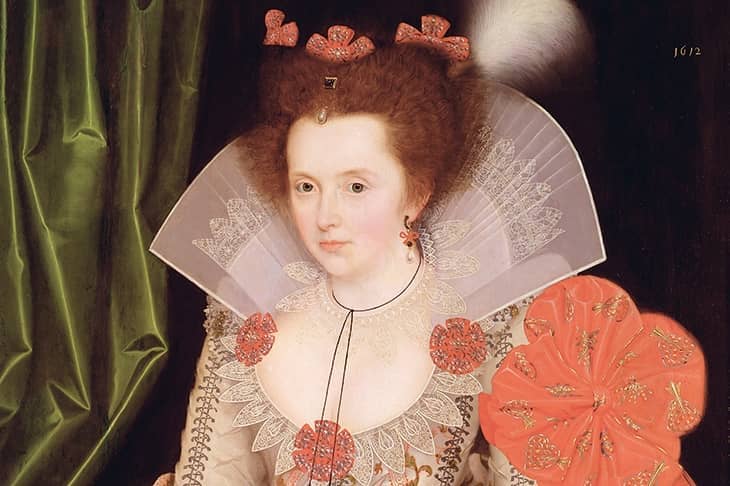Many girls dream about their favourite princesses. Elizabeth Stuart, a princess herself, took this fantasy a step further and modelled herself from childhood on her godmother and namesake, Elizabeth I. The young daughter of James I plucked her hairline to imitate her father’s predecessor, the great Tudor queen.
Aged ten, she was painted with a vivid red wig, dripping in jewels recognisably inherited from her godmother. She even practised her signature until it was almost indistinguishable from Elizabeth I’s famous flourishes. At 13, grandeur got the better of her when she signed herself ‘Elizabeth R’, her most exact copy yet of the queen’s mark. The surviving document shows that someone — perhaps a tactful adult — erased a downstroke from the ‘R’, returning Elizabeth Stuart to her rank as ‘Elizabeth P’, or ‘Elizabeth Principessa’.
Nadine Akkerman is well placed to write about signatures and why they mattered, being an expert on 17th-century letter writing in Europe. Her first book for the general reader was Invisible Agents: Women and Espionage in Seventeenth-Century Britain; and her knack for deciphering codes and uncovering spies’ letters also underpins this doorstopper biography, as she guides us through the network of diplomats and agents that kept Elizabeth Stuart abreast of every twist and turn in the tumultuous history of the age. In her years chasing her subject through the archives, Akkerman has discovered 1,000 untranscribed letters, has cracked nine new codes used by Elizabeth and her friends, and has deciphered 125 encrypted letters.
Many contemporaries thought Elizabeth Stuart would have made a far better ruler than Charles I
Not only did Elizabeth Stuart model herself on Elizabeth I, but throughout her life English writers praised her as that queen’s reincarnation. Underscoring this biography is the implication that they were right to do so, and that the Scottish-born princess could have done a far better job of ruling the three kingdoms than her younger brother, Charles I.








Comments
Join the debate for just £1 a month
Be part of the conversation with other Spectator readers by getting your first three months for £3.
UNLOCK ACCESS Just £1 a monthAlready a subscriber? Log in